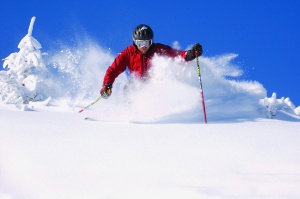BTN focus: Ski industry braced for a chilly winter

The outlook for skiing in 2009/10 remains uncertain for skiers and the ski business alike. Despite last season’s excellent snow conditions, the feelgood factor has yet to transfer to the forthcoming season, and operators are bracing themselves for a tough season.
Panic over the health of the global economy gave skiers more immediate things to worry about than booking holidays to the Alps. In the peak period for booking ski holidays, from September to November, consumers held back on discretionary purchases.
According to the annual Ski Industry Report compiled by the UK’s largest winter sports operator, Crystal, the ski market fell by 13.3% across all sectors last season despite good early sales and excellent snow conditions. The fall follows seven successive years of growth and reduces the number of UK skiers travelling from more than 1.22m in 2007/8 to just over 1m in 2008/9.
The decline in numbers is due to some skiers giving the season a miss due to the economic climate and others taking just one trip where they might previously take two or more.
Some encouragement comes from the schools market which remained stable with more than 140,000 junior skiers taking to the slopes and memories of last season’s great snow will have whet the appetite of many skiers to return.
ADVERTISEMENT
The independent travel sector was down by 15% to 327,000 skiers with some low-cost carriers reducing their flight capacity to ski destinations. The tour operator sector also saw their number decreasing by 15% to 597,000 skiers, partly due to fewer multiple trips, fewer new skiers and a shorter ski season.
France continues to be the most popular country despite seeing a slight decline of 0.5%, taking 37.0% share of holidaymakers last season. Switzerland, which benefits from higher resorts than its neighbour France, shows a steady share of 6%.
Austria and Italy increased market share by 1.8% and 1.1% respectively. Bulgaria also saw a small increase to 3.2% and the small countries sector grew by 0.5% reflecting the rise in popularity of Slovenia.
Despite good snowfalls, North America’s share dropped by 1.4% due to the collapse of Zoom, other airlines reducing seat capacity and many skiers opting for better value European resorts.
The Andorran ski resorts saw a further decline in visitors from a 2% fall last season to 5% which is attributed to its continuing attempt to reposition itself from a budget to quality destination. It also suffered from end of season capacity reductions from most operators.
The 2009/10 season undoubtedly poses serious challenges for an industry that is impacted by the effects of the recession, exchange rate pressures, high fuel costs and high fixed costs for ski holiday companies.
The Crystal Ski Industry Report finds strong evidence of chalet companies significantly reducing the numbers of properties for next winter leading to fewer holidays on offer.
It predicts that next season skiers will become increasingly price-sensitive which will contribute to a reversal of recent trends which saw a growth in independent travel.
Large-scale operators could re-gain some of the ground lost to DIY travellers if they
are able to use their buying-power to get lower prices and pass these onto consumers as attractive packages.
There is also an expectation that many large operators will cut capacity and consumers will see fewer ‘last minute bargains’ than in previous years. Some low-cost airlines are expected to reduce their flights to ski relevant destinations, which could have an impact on the independent sector. There remains speculation around further industry consolidation in the year ahead.
Crystal’s MD Mathew Prior said: “Winter 08/09 was a difficult year for the ski industry and 09/10 poses challenges for us all. Creating transparently good value deals I see as the key to ensuring that as many as possible return to the slopes this coming season.”

